Original URL: https://www.theregister.com/2013/12/31/end_of_year_review_2013/
Glassholes, snapt**ts, #blabbergasms, selfies and PRISM: The Reg's review of 2013
12 months in 26 characters
Posted in SaaS, 31st December 2013 09:01 GMT
Year in Review "Selfie" is the Oxford English Dictionary's word of the year. There's nothing new about a "selfie" - it's a self-portrait - but a perfect storm of social networks and smartphones has given popularity to a word and an act even world leaders feel it's OK to do on really serious occasions.
In keeping with a long tradition here at The Reg, we came up with a few new words of our own in 2013: Glasshole and blabbergasm were our best.
With the year coming to an end, it seemed fitting to pick the best (and worst) of 2013 in 26 words - one for each letter of the alphabet.
Among the hits: Microsoft chief executive Steve Ballmer blubbering in front of an audience of thousands to the Dirty Dancing soundtrack hit (I've had) The Time of My Life, the Twitter IPO, a helpful volunteer showing us the dangers of wearing Google Glasses while driving a car in California, smartwatch fever, the rise of The Dark Web, the crash of Silk Road and... oh, just read the article:
A is for Accessorize: If you believed the hype, then Apple and Microsoft were both developing competing smartwatches - wrist-worn variants of the tablet. Rumours of an Apple wearable swept the web after smartwatch pioneer Pebble’s Kickstarter crowd-sourced fundraiser, and it wasn’t long before Redmond was supposedly in on the act, too. Helping drive the hype was a desire to see a successor the tablet from somebody, anybody... combined with parallel interest in Google Glass (See G is for “Glasshole”).
By year’s end, neither Apple nor Microsoft had delivered a smartwatch, but others had: more than 200,000 so-called "smart wearable bands" shipped in the first half of 2013 with the number expected to grow by more than 500 per cent in the second half, according to analyst Canalys.
Often though, what we got was limited - large and chunky wrist tech that relied on Bluetooth tethering to get online and that was often function-specific. Samsung had the biggest success with Gear, a wrist-worn timepiece packing camera, video, phone functionality and 4GB memory with voice-activated controls.
Samsung sold more than 800,000 Gears in the first two months of hitting the street - more than the total number of wrist wearables sold by everybody in the first six months of the year. Signs were promising but we didn't get a changer from Apple or Microsoft and the devices available were all a long way from the dreams of those who'd been willing the smartwatch into existence, to succeed the tablet as The Next Big Device. There's always next year. Sigh.
B is for #Blabbergasm: Twitter IPO’d in a media storm to became the second most successful internet listing after Facebook – earning $1.8bn versus $16bn. Twitter’s share price rocketed up 73 per cent on the first day from a list price of $26 a share. Twitter’s IPO proved Wall St remains fascinated by the potential for social networks to spin money from their only asset, million of non-fee paying users, but that the hard work on actually making money lies ahead. Two possible destinies now await Twitter: to soar like Google, which opened at $85 a share in 2004 and has grown more 900 per cent to $1,000 today or crash out like Zynga that opened at $11 in December 2011 and now trades at $3 a share following a massive drop. Or it might just bump along and not go very far at all.
C is for Cloutage: The cloud, technology firms told us, is more reliable then running our own servers. OK, but it’s still people in charge of servers, and people still make mistakes - just on somebody else’s servers, as this year’s massive cloud outages proved. Millions of business users and individuals worldwide were kicked offline for hours at Amazon (.com and AWS), Google, Microsoft and Salesforce. The great crashes saw business customers unable to function at even the most basic level. A two minute crash in Google’s severs in August killed Gmail and Drive in addition to search and YouTube, taking out 40 per cent of the world’s web traffic. No reason was given. Scheduled maintenance crippled nearly half of Salesforce instances in Europe and the US in November.

Different servers, same problem: humans
Microsoft was a serial offender with its son-of-Hotmail Outloook.com sinking and Skydrive going dark, and then Windows Azure going down across the world. Microsoft’s Azure outage was blamed on changes to an infrastructure component of Windows Azure put Microsoft’s cloud in global meltdown in October. In other words: maintenance. As the Microsoft exec pulled to account told The Reg afterwards: “There are three truths of cloud – machines will fail, software has bugs, people will make mistakes."
D is for Defenestration: Microsoft’s Steve Ballmer, Blackberry’s Thorsten Heins, Acer’s JT Wang, and Intel’s Paul Otellini were pushed or jumped this year. Ballmer became Microsoft’s CEO in 2000 and planned to stay until 2017, but a decade of missed opportunities culminating in a money bonfire this summer (see W is for Writedown) finally proved too much for shareholders and the board. A blubbering Ballmer was given a year to transition out as he officially “retired” and Bill Gates and John Thompson looked for a replacement.
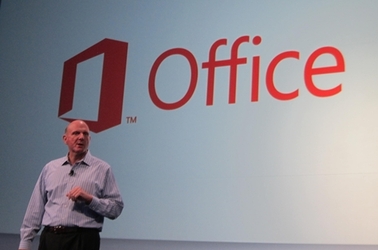
Ballmer's end was sudden and unexpected
Heins became Blackberry CEO in January 2012 to lead a re-branded RIM into an era of touch-screen phones and operating systems, and put the legendary Messenger on more popular smart phones. But losses, like unsold piles of Z10s, mounted leading to a $1bn quarterly loss late in the year while the market share sank to 6.8 per cent. After trying, and failing to find a buyer, Blackberry dumped Heins for corporate turn-around-man (see T is for Turn-around men) and former Sybase CEO John Chen. Acer’s Wang fell on his sword after just over two-and-a-half years and following wider losses as consumer demand for PCs continued to collapse. Otellini, CEO of the world’s largest chip maker for eight years, was gone in May as announced last year, having failed to crush ARM with a convincing Intel mobile punch and while the PC market continued to sink leading to disappointing results and flat growth.
Huawei? Well, we equip 45 of world's top 50 telcos...
E is for Enigma: A year of will-it-won’t-it-quit-the-US-telecoms-market climaxed in December when Huawei CEO Ren Zhengfei said that he was pulling out of the US. “If Huawei gets in the middle of US-China relations... it’s not worth it,” he reportedly told French news site Les Echos. Huawei has been the target of reports and the cause for concern among many western governments over possible connections to cyber espionage. The issue is Huawei’s close relationship with the Chinese government and military - illustrated by the fact that Zengfei is a former Chinese army officer.
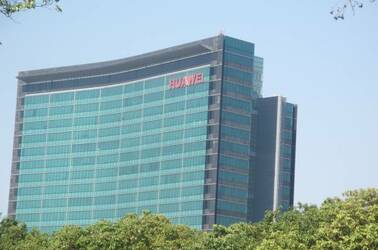
Did Huawei finally reach its breaking point with the US?
The US has always struggled with foreign-owned companies owning chunks of its critical national infrastructure – like ports, airlines and banks – so it’s none too comfortable that Huawei equipment is installed at 45 of the world’s largest 50 telcos. Apparently that pressure became too much for Zhengfei in 2013. Or did it? Immediately after the interview, Huawei was telling press it “remains committed” to the $1bn of sales in the US.
F for Floater: Was it a water-cooled data centre? Home of the last remaining dinosaur? Or a wild party boat? Just what was the 250-foot-long, four-storey high vessel made of shipping containers that appeared in San Francisco Bay during October? Speculation was furious on both conspiracy blogs and in the mainstream news.
Not helping was the fact engineers and welders working on the vessel, even the US Coast Guard patrolling the Bay’s waters, had all been forced to sign non-disclosure agreements by those behind the project.
The truth, as it turned out, was actually rather boring: a set of showrooms to showcase Google technology and that are designed to be portable. It was all the work of Google co-founder and Glasses chief (See G is for Glasshole) Sergey Brin and his Google X team. The structure ran to 13,726ft2 (1 275m2) in size, featured huge windows, Wi-Fi antenna, aircon, sewerage pipes and even a set of “impressive” staircases and balconies.
A second barge was discovered in Maine but by December the project had hit the rocks with Bay conservation officials who’d met Google telling the press the project is “on hiatus” and probably won’t be finished until well into 2014 – long after it was expected. The US Coast Guard was also understood to have been concerned about the vessel’s suitably for onboarding landlubbers and Glassholes (see G is for Glasshole).
G is for Glasshole: “A cop just stopped me and gave me a ticket for wearing Google Glass while driving!" incredulous Google eyewear fan Cecilia Abadie wrote on – what else - her Google+ page. "The exact line says: Driving with Monitor visible to Driver (Google Glass). Is #GoogleGlass ilegal [sic] while driving or is this cop wrong???" Abadie, from Temecula, had been stopped for doing 80mph (128kmph) in a 65mph (104kmph) zone in San Diego, California, in October.
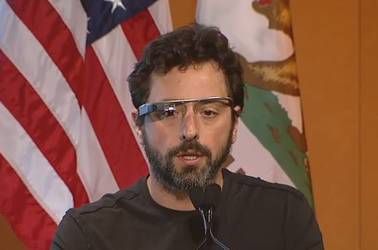
Don't do it, Sergei, don't wear them and drive
Abadie pleaded not guilty at her hearing December, with her defence team arguing the Google gear hadn’t even been turned on at the time. We’d argue that wearing them under these circumstances would seem a rather pointless and pretentious move, but who are we to judge?
H is for “H”: Ian H Watkins, the former member of big-in-the-'90s group Steps announced he was retiring from Twitter after a mob descended and began hurling vile abuse at him in the mistaken belief he was singer Ian Watkins of the Lostprophets – who was sentenced to 35 years over child sex offences including the attempted rape of a baby. The Lostprophets’ man had been branded a "determined and committed paedophile" by prosecuting QC during the case. But to the righteous web there couldn’t possibly be more than one Ian Watkins on the internet at one time.
The Steps man is now said to be "furious" with search-giant Google because his photo continues to appear next to stories of the Lostprophets' singer in searches - an all-too-familiar outcome caused by the way Google's news and search algorithms function independently of human input. Google, usually above such complaints, promised that it's looking into the issue.
I is for Insider: “Are you a Microsoft Trojan?” a heckler asked Stephen Elop following his Mobile World Congress (MWC) keynote, not long after he'd ascended to become Nokia CEO. How we, and he, laughed. (Well, he didn’t laugh but we did. After all, we were thinking it.) Hired to re-tool Nokia and reverse its tumbling smartphone market share in the face of Apple’s iPhone onslaught and fresh from Microsoft, Elop’s “big answer” in 2011 was to adopt Microsoft’s then-new smartphone operating system – Windows Phone – for all Nokia handsets.
Since then Nokia’s revenue has fallen 40 per cent, its share of the smartphone market has dropped to around two per cent, Nokia’s stock price has fallen by 60 per cent in value and Elop’s recovery plan has been pushed back and altered.
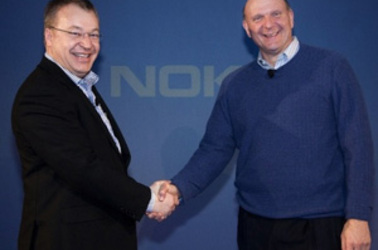
No you shouldn't have, really. Nokia? How sweet...
During 2013, Elop’s “big answer” was to actually sell Nokia - to Microsoft, in a $7.2bn deal that has now been approved by Nokia’s shareholders. Microsoft gets a mobile phone making biz while Elop is now in the running to become CEO of the company that once employed him (see D is for Defenestration and T for Turnaround men). Yup. How we laughed.
J is for Judgment Day: The servers running more than half of the world’s internet searches and ads evolved this year, and those running them don’t know how – or why.
Google told the Machine Learning Conference in San Francisco last month that it has been using machine learning on some of its servers, stringing together large clusters to automatically classify data, such as pictures. However, its systems have been picking out minor details in images and differentiating between pictures. The kicker is that Google’s engineers can’t explain how the servers have learned to spot the differences (the pictures in question were shots of bog-standard shredders.)
Is this the beginning of the rise of the machines? "We had to rely on data to engineer the features for us, rather than engineer the features ourselves," Google software engineer Quoc V. Le told the conference.
It's all 'bout the money
K is for Ker-ching: Bitcoin is a virtual payment system that lived on the fringes of the web until this year, when interest exploded. The virtual currency’s value peaked on one Bitcoin exchange with a single Bitcoin worth $1,209.94 in November – its value having increased 100-fold during the year. More than 250 web retailers were accepting Bitcoin on Black Friday in the US, Richard Branson’s Virgin Galactic said it had accepted the virtual currency to pay for flights and US economics chiefs called Bitcoin a "legitimate service". The media became fascinated. The driver for all this was Dark Web (see N is for Nefarious), when it transpired the currency was being used to trade illegal goods and services. Crims liked the fact Bitcoin is not traceable: it's virtual and not owned or operated by a central source.
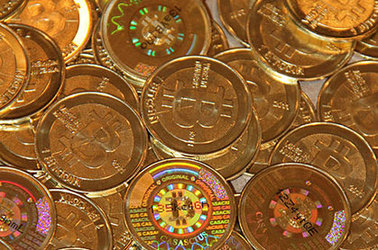
Don't blink, its value will half
To this end, the tabloid rise and take down of criminality exchange Silk Road was a big help in boosting its profile but this also made it look meme-ish, like this year's Second Life. Stability remained one of Bitcoin’s primary problems - by mid-December, the Bitcoin's value had slumped to half its November high. The number of Bitcoin transactions are not even a blip compared to the volume of real currency transactions by the likes of Visa and Mastercard. And if that's not omen enough, consider that Facebook antagonists the Winklevoss twins are betting heavily on Bitcoin. Now you know it’s doomed.
L is for #Loser: You thought you’d seen the worst in 2012 when social marketing “experts” embarrassed themselves and singer Susan Boyle by coming up with #susanalbumparty to promote the singer’s latest work.
2013, however, saw the #bubble_explode. First there was an inevitable outpouring of “good advice” from the same, self-styled SEO “gurus” who gave us "susanalbumparty" in the first place; then the #bubble inflated. No longer simply #used #after #every #word #in #an #online #post, or #on_websites_where_they_don’t_actually_work, or by some loser #trying_desperately_to_kick_start_a_web_meme, # started getting used in ordinary, everyday conversation by hipsters, stupid people, and marketing types trying to seem hipper or cleverer than they actually are.
It was the 2013 equivalent of air quotes from the 1990s. The #reaction when it came was captured by US comedian Jimmy Fallon and #of_all_people Justin Timberlake. LOL. The # started 2017 as a way to link conversations on Twitter and based around actual events like #WWDC or #Doctor_Who. 2013 saw the # finally bankrupted.
M is for Munchies: Normally it is pizza and coke that keep devs marching, but at Google it’s KitKats – if Google is to be believed. The search giant rolled out Android 4.4 in October and took a break from its usual confectionery based naming convention by using an actual brand name rather than a generic with KitKat.
Surely a legal minefield, with manufacturers Nestle and Hershey’s owning and operating the choc bar’s name? Apparently not, according to Google, which said all it took was a quick call to Nestle and an agreement within 48 hours that "was not a money changing hands kind of deal". Sure. Various Android fondleslab marketing tie-ups and promotions followed for lucky KitKat owners and eaters.
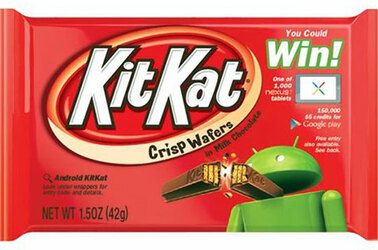
Yum - I taste a New Age, no-money brand tie-up
But KitKat when Key Lime Pie was the name in the pipeline for Android 4.4? KitKat was the Android team’s favorite snack, according to the Chocolate Factor. Oh, and relatively few people know, or have tasted, Key Lime Pie.
N is for Nefarious: While the authorities devoted their attention to snooping on us (See P is for PRISM), the real crims had been massing inside something that became known in 2013 as The Dark Web. The crims, it emerged, had co-opted TOR, a tool for internet privacy blocks your browsing and web viewing habits from outsider observers.
They were using it to conduct their activities shielded from the eyes of law enforcement and internet service providers. The case of Lostprophets singer Ian Watkins (see H is for H) raised the issue of how paedophiles had been using TOR. Code-breakers and snoops from GCHQ and NSA (see P is for PRISM) are now reported to have been instructed to “secure a foothold” in the Dark Web flushing out paedophiles, working with Microsoft, Google and Facebook in the process.
Every world has a currency and the currency of this dark world was Bitcoin. This is a peer-to-peer payment system created in 2009 by a mysterious person or group calling the Satoshi Nakomoto, the Keyser Söze of our times. It had been - and continues to be - used by 'net traders, but in 2013 interest exploded after it emerged the system’s anonymity and the fact it can be held in escrow provided the perfect cloak for drug dealers working through an online exchange called Silk Road. It was the pre-paid SIM card of 2013.
The US Drug Enforcement Agency (DEA) made their first seizure of Bitcoins – 11 worth $814.22 - in June following a raid on an alleged drug dealer’s house in South Carolina, but things peaked in October as the FBI shut down Silk Road and arrested a suspect – Ross William Ulbricht – whom they claimed to be its operator, Dread Pirate Roberts, on charges of narcotics-trafficking conspiracy, computer hacking conspiracy, money laundering and conspiracy with $3.6m worth of Bitcoin confiscated.
O is for Outsourced: A rather clever dev sent his job overseas to a subcontractor in Shenyang, China, freeing up his days to surf the web, hit various social networks and watch cat videos on YouTube. “Bob”, not his real name of course, also scored astoundingly high marks in his company’s performance reviews. The thing that gave Bob away in the end was a security audit called in by bosses who’d spotted calls from his machine to outside their VPN, and were alarmed they’d been compromised by a zero-day malware attack.
Big Brother's watching
P is for PRISM: Ever feel like you’re being watched? You should be, because you are if former WikiLeaks deep throat Edward Snowden is to be believed. Snowden, formerly a contracted CIA technician, outed himself in June and was granted asylum in Russia. In coming out, he released documents to The Guardian, Washington Post and others. The docs, among other things, pointed to the existence of mass US data slurping programme called PRISM that started life in September 2007.
He claimed PRISM was operated with the help of all the major service providers and technology companies, and with the NSA tapping into the central servers of nine leading US telcos in order to extract audio and video, photographs, emails, documents and connection logs to "track foreign targets". Some companies had received financial reimbursement for helping, while others had declined. The revelation blind-sided companies who either denied they were working with the NSA or said they were only granting access to data using proper legal channels.
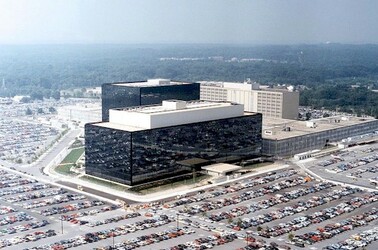
The NSA - nothing more unobtrusive or sinister than a big black HQ building
Squinting after being thrust into the spotlight, the normally invisible NSA was moved to try and downplay its activities, publishing a report it claimed proved it was watching a mere 1.6 per cent of the traffic on the internet. But it got worse as it turned out it wasn't just 'net minions in the US getting snooped but foreign citizens and their leaders were being observed too.
Further leaked documents claimed the NSA and GCHQ tapped Yahoo! and Google data center interconnects. Embarrassed and hurting, the tech companies tried to regain the initiative with Apple, Google, Facebook, Microsoft and others writing a letter to the NSA and US President Obama calling for greater transparency in their requests for data.
But the spies were always a step ahead: in November, Microsoft was scrambling to encrypt the interlinks between its data centres after further leaked documents said the company’s Hotmail, Windows Live Messenger and Passport services had been scanned using especially developed software.
In December, it was NSA spooks who were going native in World of Warcraft and Second Life to conduct surveillance on millions of gamers across the globe and using "harmless" Google cookies to spot targets.
This after the web hit meltdown when it was claimed the NSA and GCHQ had "circumvented or cracked much of the encryption or digital scrambling” used to protect data like emails and internet chats. This was abbreviated to say the spooks had cracked web encryption.
It’s unknown what more will come courtesy of Snowden next year, but one thing is clear: the internet is not the Wild West it was in the 1990s. As its uses have grown and matured, so has the sophistication of those who monitor society. The spooks that once tapped analogue phone lines and radio signals from “the enemy” have updated their game and gone web scale.
Q is for Quiver: normally it doesn’t take prisoners and stands firm against the world while its investors generally trail meekly behind. Not so in 2013 as both Oracle and its investors shook in the face of uncertainty. Oracle missed Wall Street expectations for three successive quarters in a row, with sales of new software licences slowing to zero growth down and sales of Larry Ellison’s prestige server business dropping 14 per cent during one particularly juicy quarter.
By the end of 2013 was getting market down by analysts concerned by growing competitive pressure from the cloud while investors fell CEO Larry Ellison wasn't worth his remuneration and in a symbolic vote rejected annual package of nearly $80m.
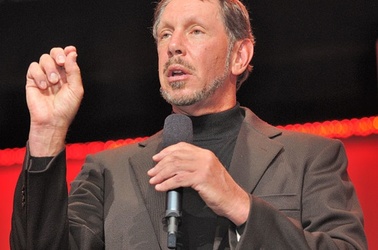
Leave my package alone
Radical steps were needed and Oracle started partnering with the freshman kids he generally picks on and roughs up during his frat-boy earnings calls with Wall Street - NetSuite, Salesforce and Microsoft on cloud.
NetSuite would integrate Oracle’s HCM and ERP cloud services to target mid-sized companies; Salesforce was to standardise on Oracle’s Linux and Exadata systems; and Oracle was to integrate Salesforce with its HCM and Financial Cloud, with Oracle implementing Oracle’s Fusion HCM and Financial cloud apps internally under a nine-year agreement. Oracle’s middleware and database would run on Microsoft’s rival virtualization stack on Windows Server and Azure with full support from Oracle.
Oracle hired loads of salespeople to shift cloudy versions of its software. By December, Oracle announced a quarter that beat Wall Street projections, but it was a hollow victory: new software sales flat, hardware sales down and a business overwhelmingly married to existing customers buying upgrades and support for existing versions of their Oracle kit.
R is for Rightsizing: Apple has been seemingly unstoppable with the iPhone and then iPad earning billions and forcing others big and small to follow its lead. Since the passing of Steve Jobs, though, we’ve been waiting for the “next big thing.” Aggressive competition from Android and a lack of a “next-big thing” seemed to rob Apple of its mojo, and 2013 took the wind from Apple’s sails. In April 2012 Wall St reckoned Apple shares would hit $1,000 within the year, thanks to better than expected iPhone sales. But by April this year the company’s stock price had fallen to a low point of $400 and people were starting to talk in terms of writing Apple off. The best hope was a smartwatch (See A is for Accessorise). From the market leader in smartphones and tablets, Apple had been kicked into a solid second position by Android with even Microsoft’s Windows Phone growing faster than iOS on phones.
Price competition was a killer on smartphones and Apple finally responded with the iPhone 5S and 5C while it hit back against Android with two new iPads – the Air and Mini with Retina display. It’s unclear whether these will stop the rot but Apple did manage to signed a deal with China Telecom that will pump iPhones into the world’s largest carrier market. By December Apple was growing once more - on $570, a year high.
Value for money
S is Snapt**t: The 23-year-old co-founder and CEO of sext-friendly Snapchat, Evan Spiegel, turned down a $3bn offer from Facebook for his company. In June, Snapchat had been valued at $800m, meaning the Facebook offer was three times the startup’s value. Not a bad for a company that makes no money and whose only product is YOU. Spiegel turned down Facebook because apparently he’s betting he can get even more users in 2014 and will, therefore, get a better price next year.
We don’t know how many users Snapchat has because Spiegel hasn’t divulged numbers, but he has claimed there are 350 million photos shared currently, up from 200 million in June. Note this is photos shared, not numbers of users. Spiegel played for high stakes. Startups' best valuations come as they are adding users and their user base is growing. This is clearly why Spiegel turned down Facebook. However, at some point, those dishing out the valuations want to know how it is you actually plan to make money. It's at this point valuations become material things and prices go down, as they are attached to tangible milestones like revenue generation. Let's hope for the sake of Spiegel's pride he's got a solid business plan in place beyond Facebook coming back for a second go in 2014.
T is for Turnaround Men: Acer and Intel picked insiders for CEOs to take their companies by the scruff of their necks – president Jim Wong and COO Brian Krzanich. BlackBerry went for fresh blood with John Chen. Microsoft can’t decide. Ford CEO Alan Mulally and soon-to-be-Microsoft-exec Stephen Elop, Skype chief Tony Bates and business unit manager Satya Nadella are all supposedly in the running, with "sources" and some Wall St stock analysts insisting Mulally really is the one Microsoft needs and that it really will get (really, really). The Reg drew up its own list of potential candidates, here. We didn't have Mulally, but Elop and Nadella made the cut.
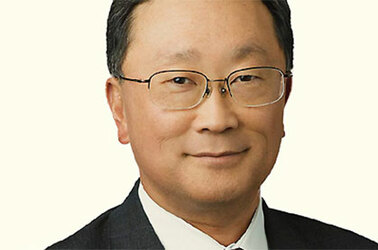
Ex-Sybase man Chen's time has come again, with Blackberry
Mulally and Chen have form: the latter an aircraft industry exec who turned loss-making Ford into an all-American comeback story while Chen tidied Sybase into a nice little mobile middleware proposition for SAP. Acer’s Wong has already been given his marching orders - a restructuring and “transformation” plan. It’s unclear what on Earth Intel’s Krzanich will do that’s different to Otellini, especially given he’s just killed Intel’s TV service. It’s also unclear what Bates, Elop or Nadella could bring to the Microsoft Titanic, other then more deckchairs.
U is for U-turn: Microsoft released Windows 8.1, re-introducing the desktop and the Start button. Microsoft had slipped the word about what was coming to the FT in May, saying “key aspects” of Windows 8 – then just seven months old – would be changed in response to customer feedback.
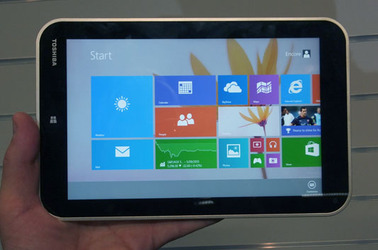
What at principled and non-stubborn U-turn looks like
“We’re are being principled, not stubborn,” marketing megaphone manager Tami Reller said.
Metro was supposed to be Microsoft’s all-or-nothing leap into touch Windows users couldn’t find their apps and were rudderless in the new interface. But Windows 8.1 came in the wake of one of the worst periods of sales in PCs on record, with some blaming Microsoft and Windows 8.0 for making a bad situation worse.
V is for Vomit: Sick of Apple? So were fanbois, but for different reasons. iDevice fans took to the forums in September to say they were suffering sudden bouts of nausea and headaches when using iOS 7.
The culprit? A n excess of zoom animations combined with a parallax effect to create the sense of 3D layers. “I hope Apple creates a way to disable this in a future update. I just sent them feedback, you should do the same,” wrote one user. “I can't believe someone when testing iOS 7 didn't say, 'Hey, this animation makes me nauseous'. I find that incredible.” Incredible, but the solution already lay at the fingertips of those in trouble, if only they could pry their finger tips from the edges of their toilet seats: you could turn off parallax by fiddling with Reduce Motion/toggle switch accessibility settings. Zooming animations were another thing.
W is for Writedown: Microsoft wrote off nearly $1bn in stock on unsold versions of its ARM-based Windows tablet, Surface RT, in the fourth quarter. Surface RT was a big deal for Microsoft: not just one of its first tablets from Redmond but the first version of Windows for ARM – Windows made its name on Intel. Smaller and lighter than the Intel-based Surface Pro, the Surface RT was a nice idea but lacked any practical application because there were no apps.
Microsoft sold just 900,000 Surfaces in the first quarter of the year, down to 200,000 in Q2. How bad was that? Apple moved 19.5 million and 14.6 million iPads. In market-share terms, Microsoft had less than two per cent versus 60 per cent plus for Android. This was Microsoft’s second act of financial vandalism in just a year, having the year before written off aQuantive, which it had bought for $6.3bn in 2010. Surface RT might have cost less, but it hurt a whole lot more: investors dumped Microsoft stock on the RT writedown, slashing $34bn off the value, as shareholders lobbed a class-action lawsuit at Ballmer and other top executives for allegedly hiding the scale of losses. But the biggest casualty was Microsoft’s CEO Steve Ballmer (see D is for Defenestration).
Icahn... Oh wait, maybe not...
X is for X-directory: Going private was the new IPO for companies who wanted to re-structure away from the spotlight. Dell announced a $20bn leverage buyout in January, having decided to go private in August 2012, as revenue and profits slumped. Michael was expected to bid adieu to Wall Street by the summer, but activist shareholder Carl Icahn came up with his own turnaround plan, and only give up the fight in September.
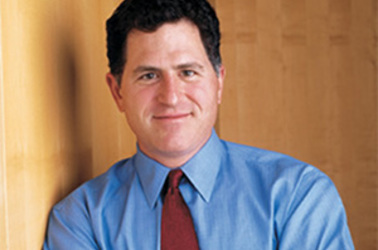
Dell belongs to me once more... and a multi-million dollar consortium
The world’s third largest PC maker, Dell, officially went private on 29 October, 25 years after listing at the dawn of the PC boom and in a deal valued at $24.9bn. Software-maker BMC said in May it was allowing itself to be bought by a consortium of private equity firms paying $6.9bn and giving shareholders a price per share of $46.25. The software management specialist cashed in after missing Wall Street estimates for its quarterly earnings and cutting estimates for the year. Unlike Dell, there was no Icahn to object and BMC had gone private by September.
Y is for Yahoo! not Yahoo!: “Yahoo’s '30 Logos in 30 Days' is not a gimmicky marketing stunt but more likely a clever, innovative, data-driven rebranding,” blathered one web writer of Yahoo!'s logo redesign. The brilliant idea was not just to come up with one new logo but 30 possibilities and present them to an edge-of-its-seat web each day for 30 days.
This was not a cheap PR campaign to generate buzz in Yahoo! for its CEO Marissa Mayer - a fact disproved by the fact Mayer appeared in a gushing Vanity Fair article with accompanying retro photo shoot (in November, Mayer made number eight on Fortune's list of 50 Most Powerful Women.) No, this was a bold business plan. The PR spin had it that even geeky Mayer herself was fiddling with the fonts on the new logo in Adobe Illustrator.
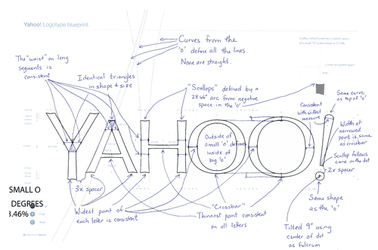
Marissa Mayer's blueprint for Yahoo!'s future
“I know just enough to be dangerous,” Mayer told Tumblr. Dangerous wasn’t the word for what we got: same, standard Yahoo! colour purple, just a different font and a tilted exclamation point - offset by nine degrees: “Just to add a bit of whimsy." For all the whimsy, Q2 revenue sank five per cent to $1.41bn and earnings dropped 19 per cent to $331m. But at least Mayer got the CEO-logo-fiddling thing out of her system.
Z is for Zero: Intel’s freshly minted CEO Brian Krzanich (see T is for Turn-around-men) was pushed on stage at his company’s first investor meeting in November to deliver the bad news to the money men: no growth in 2014.
The world’s largest chipmaker has spent billions of dollars in the last two years trying to diversify out of the shrinking PC sector and in to tablets and wireless, developing smaller and more power-efficient chips for mobile against ARM such as Atom and Haswell - launched in 2013 – while also planning some Web TV service by the end of this year.
The latter was killed. Krzanich, though, had effectively said that not only is the new stuff struggling but that Intel isn’t doing very well at getting its core business, chips, on to new devices. That means not only will the Christmas period – when every consumer electronics maker is rolling in cash – be a miserable experience for Intel, but that every day next year will feel like Christmas for the chipmaker too.
Bootnotes
Gone but not forgotten in 2013:
Billionaire sound genius and engineer Ray Dolby
Pacemaker and ATM hacker legend Barnaby Jack
Ed Iacobucci, the brains behind Citrix thin-client computing and IBM's OS/2 rival to Windows
Beast-master, skeleton raiser and stop-go animation king from a time before CGI Ray Harryhausen
Is that a wire I see before me? Thunderbirds, Captain Scarlet and Joe 90 creator Gerry Anderson
Maggie Thatcher, the Iron Lady who saved us from drab Post-Office mobes